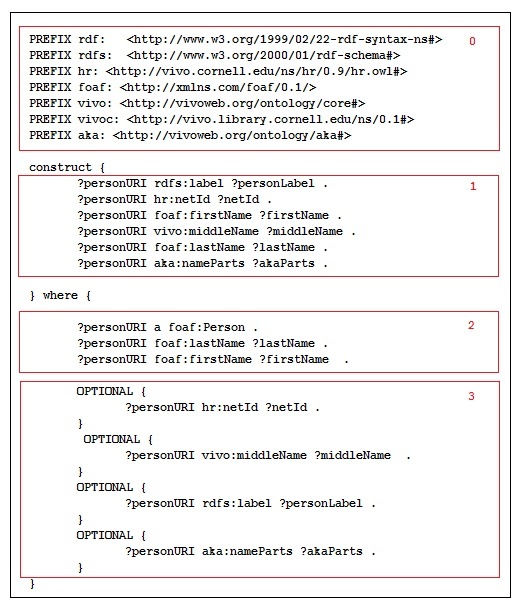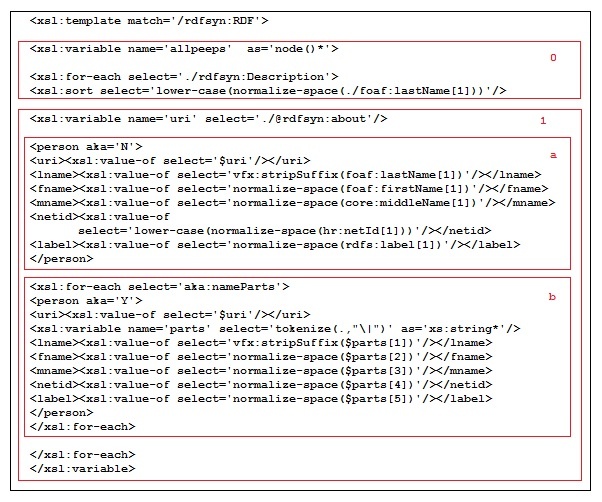Appendix E
In this section we consider the process used to create Per0.xml from the foaf:Person triples in VIVO. We begin with the Sparql query shown in the next figure. Note that the aka attribute has no role in the example.
- [F25H0] This is the section where prefixes are declared.
- [F25H1] In the construct clause the potential triple set is specified.
- [F25H2] This section of the where clause declares the mandatory triples:
- personURI must be a foaf:Person and
- have both a first and last name
- [F25H3] The optional triples are listed here: netid, middle name, label and any aka:nameParts triples. These express the list of aliases for the personURI.
The Sparql Query for Per0.xml - Figure 25
This query is invoked with a selection of RDF/XML as the result set format. This XML is transformed into the form used in Per0.xml by the transform shown in the next two figures.
- [F26H0] Set up to collect a node list of person information in the allpeeps variable.
- [F26H1] Extract the URI from the rdfsyn:about attribute and
- [F26H1a] Create a person element from the foaf , core and rdfs elements and set the aka attribute to ‘ N ' indicating that this data is not from aka:nameParts triples;
- [F26H1b] For each aka:nameParts triple with this URI as a subject create a person element with the aka attribute set to ‘ Y ’.
Per0 XSLT Part 1 Figure 26
The next figure shows the portion of the transform that outputs the XML Per0.xml and the vfx:stripSuffix function used to remove such data from the last name of each person.
- [F27H0] This outputs the person elements that have last and first names.
- [F27H1] This function removes common suffixes from the end of a string. These often cause mismatches because they are employed inconsistently.
Per0 XSLT Part 2 Figure 27


